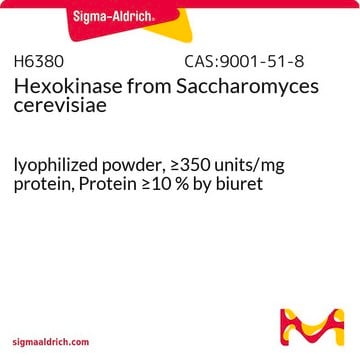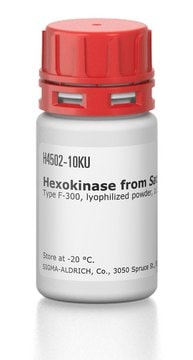Transportation information can be found in Section 14 of the product's (M)SDS.To access the shipping information for this material, use the link on the product detail page for the product.
H7779
Retinoic acid p-hydroxyanilide
≥95%
Sinónimos:
4-HPR, Fenretinide, N-(4-Hydroxyphenyl)retinamide
Seleccione un Tamaño
Seleccione un Tamaño
About This Item
Productos recomendados
biological source
synthetic (organic)
Quality Level
assay
≥95%
form
powder
color
yellow to yellow-orange
storage temp.
−20°C
SMILES string
CC1=C(\C=C\C(C)=C\C=C\C(C)=C\C(=O)Nc2ccc(O)cc2)C(C)(C)CCC1
InChI
1S/C26H33NO2/c1-19(11-16-24-21(3)10-7-17-26(24,4)5)8-6-9-20(2)18-25(29)27-22-12-14-23(28)15-13-22/h6,8-9,11-16,18,28H,7,10,17H2,1-5H3,(H,27,29)/b9-6+,16-11+,19-8+,20-18+
InChI key
AKJHMTWEGVYYSE-FXILSDISSA-N
Categorías relacionadas
General description
Application
Biochem/physiol Actions
signalword
Danger
Hazard Classifications
Acute Tox. 4 Dermal - Acute Tox. 4 Inhalation - Acute Tox. 4 Oral - Eye Irrit. 2 - Repr. 1B - Skin Irrit. 2 - STOT SE 3
target_organs
Respiratory system
Storage Class
6.1C - Combustible acute toxic Cat.3 / toxic compounds or compounds which causing chronic effects
wgk_germany
WGK 3
flash_point_f
Not applicable
flash_point_c
Not applicable
ppe
Eyeshields, Gloves, type P3 (EN 143) respirator cartridges
Elija entre una de las versiones más recientes:
Certificados de análisis (COA)
¿No ve la versión correcta?
Si necesita una versión concreta, puede buscar un certificado específico por el número de lote.
¿Ya tiene este producto?
Encuentre la documentación para los productos que ha comprado recientemente en la Biblioteca de documentos.
Los clientes también vieron
-
What is the Department of Transportation shipping information for this product?
1 answer-
Helpful?
-
-
How can one store a solution of product H7779, Retinoic acid p-hydroxyanilide?
1 answer-
A solution of product H7779, Retinoic acid p-hydroxyanilide, can be aliquoted and stored at -20°C for up to 3 months. Solutions should be protect from light.
Helpful?
-
-
In what solvents can product H7779, Retinoic acid p-hydroxyanilide, be dissolved?
1 answer-
Product H7779, Retinoic acid p-hydroxyanilide, can be dissolved in DMSO (25 mg/ml) and ethanol (25 mg/ml).
Helpful?
-
Active Filters
Nuestro equipo de científicos tiene experiencia en todas las áreas de investigación: Ciencias de la vida, Ciencia de los materiales, Síntesis química, Cromatografía, Analítica y muchas otras.
Póngase en contacto con el Servicio técnico











